All about bikini laser hair removal

The bikini area is one of the most sensitive areas of the body, requiring the most careful and delicate handling. Of all the known methods of dealing with unwanted vegetation in this area, laser hair removal is considered the most effective. What are the features of its implementation? What are the pros and cons? How many sessions are needed to get a sustainable result?

What it is?
Laser hair removal for bikini is a hardware procedure during which fast and painless hair removal is carried out using a special device (laser) that emits light waves of a certain length. During the operation of the device, the melanin contained in the hair follicle and hair shaft absorbs the energy of light flashes and heats up. Due to the heating of melanin, the destruction of the matrix cells and vessels surrounding the hair follicle occurs. At the same time, tissue cells are not exposed to the laser due to the absence (or insignificant content) of melatonin in them. As a result of the procedure, the hair that has been exposed to laser radiation, after a short time falls out along with the follicle.
The absence of discomfort (burning, pain) during laser hair removal is ensured by special contact cooling systems built into modern devices.
They also neutralize the heat generated by the laser, which prevents microburns of the skin.
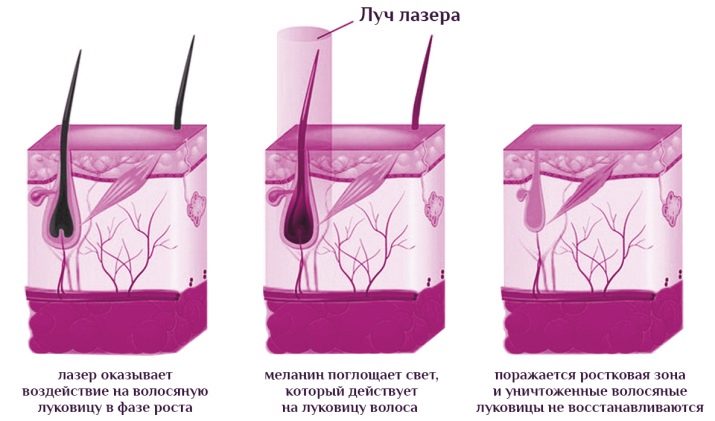
For the radical removal of hair on the body and face, specialists use lasers of several basic types, emitting waves of a certain length:
- ruby, having the shortest wavelength (about 695 nm);
- alexandrite with a wavelength of 725-755 nm;
- diode with a wavelength of about 800 nm;
- neodymium, having the longest wavelength - up to 1064 nm.
The first two types of lasers are usually used to epilate less sensitive areas of the body. With the advent of more advanced and technological equipment, cosmetologists use them less and less. For epilation of the delicate bikini area, diode and neodymium lasers are most often used, in which the light wave is the longest. It should be noted that the principle of operation of a neodymium laser is somewhat different from the operation of other types of devices, the radiation of which is absorbed by melanin. The energy of the light wave generated by the neodymium laser practically does not affect this pigment. At the same time, it is easily absorbed by hemoglobin, oxyhemoglobin and water, which leads to the destruction of the structure of the capillaries that feed the hair follicle (while the cells of the surrounding tissues are not affected).
As a result, the hair that does not receive nourishment, after a few days, falls out along with the bulb.
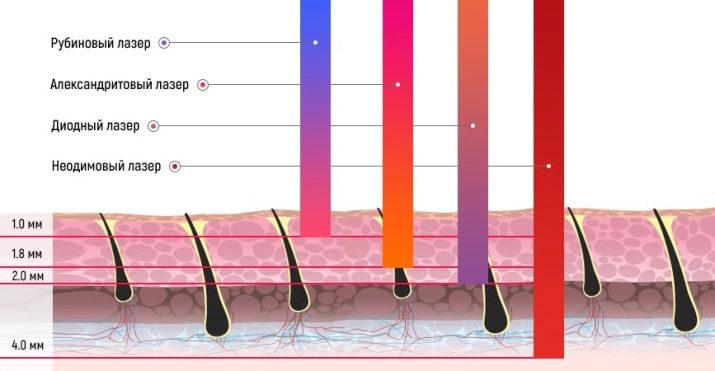
Advantages and disadvantages
Bikini laser hair removal has both advantages and disadvantages.
One of the main advantages of the procedure under consideration, most users consider the almost complete absence of discomfort during its implementation. In fact, laser hair removal of the intimate area, unlike shugaring or waxing, is almost not accompanied by pain. In addition, the clients of the salons also note the following advantages of the procedure:
- high efficiency and sustainable results;
- maintaining the integrity of the skin;
- delicate effect of the laser on the skin, which leads to the absence of mechanical damage and irritation after the procedure.
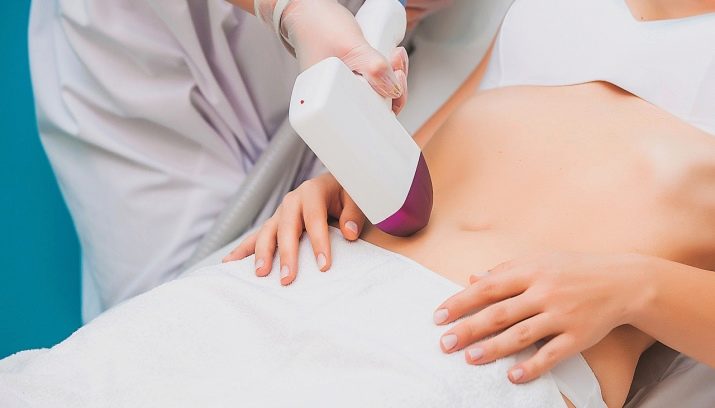
Cosmetologists emphasize that bikini laser hair removal is a safer procedure than traditional methods of hair removal (shaving, sugaring, waxing). After using razors, sugar paste or wax stripes on the skin and mucous membrane of the external genital organs, minor injuries, redness and irritation are often formed. Along with this, the likelihood of ingrown hairs is also significantly increased.
Laser hair removal of the bikini area, unlike depilation with special creams, does not cause allergic reactions... It is known that some depilatory creams containing aggressive ingredients can cause acute skin reactions, accompanied by redness, itching and rashes in the intimate area.
For this reason, for owners of hypersensitive skin prone to allergies, cosmetologists recommend laser hair removal as the safest, most delicate and effective method of hair removal.
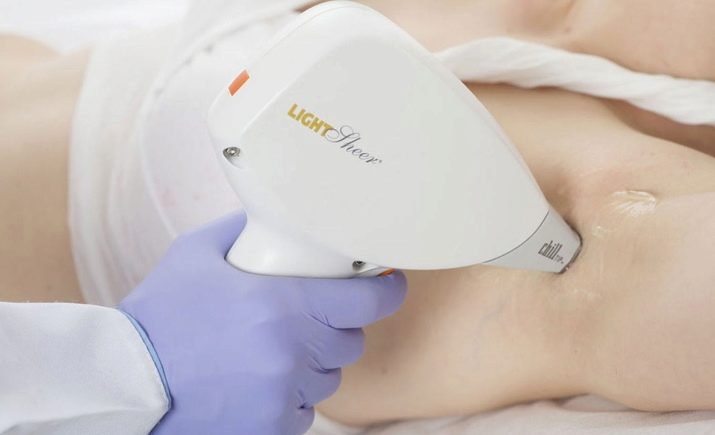
The disadvantages of laser hair removal for the bikini area are:
- delayed result (hair loss does not occur immediately);
- low effectiveness of the procedure in relation to thin, light, red or gray hairs;
- the likelihood of mechanical or thermal damage to the skin during the procedure by an incompetent specialist.
In addition, laser hair removal cannot be classified as a universal method of hair removal in the bikini area that anyone can resort to. She, like many other cosmetic procedures, has its own list of relative and absolute contraindications. The main ones are:
- infectious and viral diseases (including skin diseases);
- malignant neoplasms;
- epilepsy;
- diseases and disorders of the endocrine system (diabetes mellitus).
The decision on the admissibility of laser hair removal for the bikini area is made by the cosmetologist after a detailed conversation with the client and the study of his medical record.
In addition, a fresh tan, as well as any damage to the skin in the intimate area (abrasions, burns, scratches) are temporary restrictions on this procedure.

Species overview
Depending on the size of the treated area of the intimate zone, there are several main types of bikini hair removal, implying partial or complete hair removal. It is noteworthy that all the types of laser hair removal of the intimate area presented below are popular not only among women, but also among men who carefully monitor their appearance.
Classic
This type of laser hair removal of the intimate zone involves the removal of hair that grows beyond the edge of the underwear. During this procedure, the upper and lateral pubic hair growth lines are corrected, but the hair in the perineum and external genital area is not removed. It is worth noting that the "classic" option is often resorted to by representatives of the stronger sex, suffering from excessive vegetation on the body.
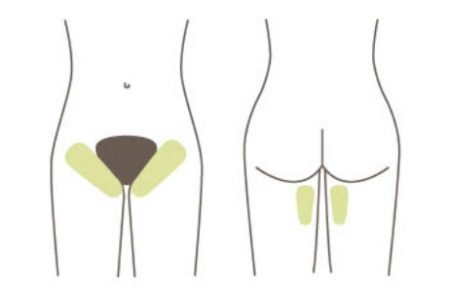
Total
This type of hair removal involves the complete removal of hairs not only on the skin of the intimate area, but also on the mucous membranes of the external genital organs, as well as in the area of the gluteal folds, perineum and anus. It should be noted that for the implementation of total bikini epilation, most cosmetologists recommend the laser, and not other means for hair removal.... A laser, unlike a razor, is less dangerous, but at the same time more effective tool. It does not cause allergic reactions upon contact with the delicate mucous membrane of the genitals (unlike depilatory creams), does not injure or irritate it (unlike sugar paste and wax stripes).

Extra bikini
This type of bikini hair removal is often referred to as "medium" or "deep". It provides for almost complete hair removal in the intimate area, with the exception of a narrow vertical area above the pubis and in the perineum. Extra bikinis are often used by women who prefer to wear briefs, swimming trunks and swimwear with high cutouts for the legs.
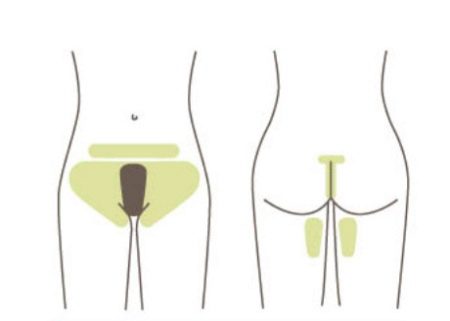
How is epilation done?
Before the procedure, the beautician conducts a conversation, during which he talks about the nuances of the upcoming event. Along with this, the specialist clarifies the following details with the client:
- presence / absence of diseases and conditions that impede the procedure;
- pain threshold level;
- personal wishes of the client to the results of the procedure.
To make sure that there are no pathological changes in the skin in the intimate area, the beautician examines the area to be epilated. Any visual changes in the skin (rashes, mechanical, thermal or other damage) may become temporary contraindications to the procedure.
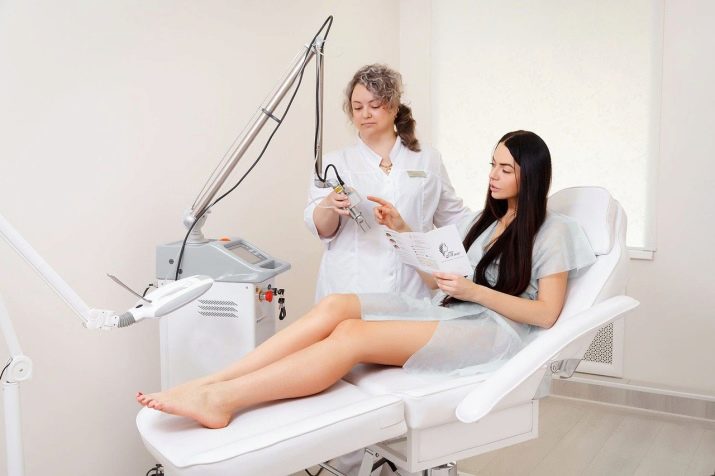
Preparation
Before doing laser hair removal of the intimate area, each client must go through a preparatory stage, which involves observing strict recommendations for 1-4 weeks. During this time, the client should not visit the solarium or stay in the sun for a long time in order to get a tan. It is also not allowed during this period to use self-tanning products and take a number of medicines: antibiotics based on tetracycline, hormonal drugs.
In addition, the preparatory stage includes preliminary hair removal in the bikini area.... This procedure is performed to prevent burns during laser hair removal, during which the hair shafts can become very hot and burn the skin.
Considering this, a few days before the procedure, beauticians recommend shaving off all the vegetation in the intimate area. Shave should be done with a new razor with a sharp, sanitized blade. Tweezers, wax strips and depilatory creams are not recommended for hair removal.

Main steps
The general sequence for performing laser hair removal of intimate places is as follows:
- the epilated area and adjacent areas are treated with an antiseptic (anesthetic is additionally applied to patients with a low pain threshold);
- a specialist adjusts the device, adjusting its operating parameters in accordance with the client's skin phototype, features of the structure and color of his hair;
- laser treatment of the epilated area is carried out;
- at the end of the work, the specialist cleans the treated bikini area and applies a soothing, anti-inflammatory and regenerating agent on it (Bepanten, Panthenol).
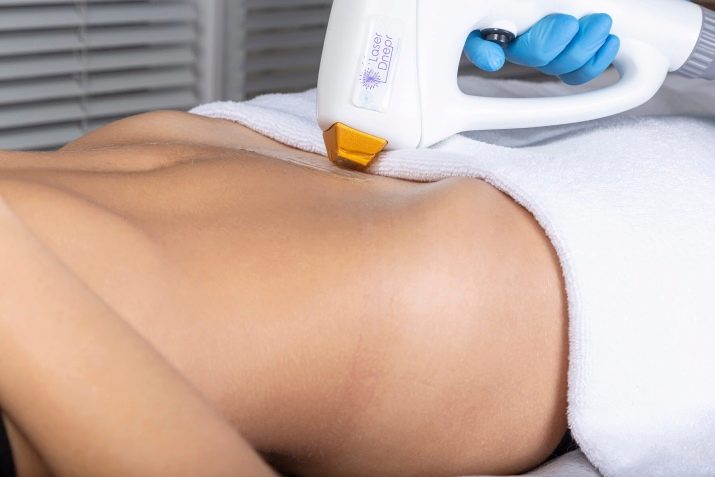
Immediately before the procedure, the client is given protective goggles. The same glasses are used by the specialist himself during the use of laser equipment.
Most clients do not feel uncomfortable during laser bikini hair removal... However, some people with a low pain tolerance still experience mild soreness or tingling during the procedure. Slight redness or slight swelling of the skin, which occurs in rare cases, after the session go away on its own within a few hours.

How long does it take?
The duration of the procedure depends on the following factors:
- client's skin phototype;
- hair structure and color;
- laser working surface area.
The average duration of one session for women usually varies from 10 minutes to half an hour (women's hair is thinner and softer than men's, which significantly reduces the processing time). In turn, the duration of laser hair removal of intimate places in men can reach 40-60 minutes.

How many sessions are needed?
The number of sessions depends on the individual characteristics of the client (phototype of his skin, structure, color and hair growth rate). In each case, the number of sessions and their duration are calculated by the cosmetologist, taking into account the above parameters. In most cases, 5-8 sessions are enough for women to obtain the desired result, and 7-10 sessions for men. The frequency of sessions can vary from 2 weeks to 2.5 months.
The need for several sessions of laser hair removal is due to the fact that each person has about 10-20% of hair in the active growth phase. The rest is the amount of hairs that develop from follicles that are in a "dormant" state. For this reason, in order to achieve the highest quality result, laser hair removal sessions are carried out sequentially, with a certain time interval (as new hairs appear).

It should be noted that laser radiation also affects the "dormant" follicles, which after a while significantly slow down in development. As a result of this, as the course of laser hair removal is carried out, new hairs begin to grow back more slowly, acquire a lighter shade, become thin and inconspicuous.
After the first session, the beautician prescribes a second procedure in 3-4 weeks. During this time, the treated hairs will fall out, and new follicles will begin to grow from the "dormant" follicles. In the same period, the client has the opportunity to evaluate the first results of hair removal.
For the third time, the procedure is carried out 5-6 weeks after the second session. The cosmetologist calculates the intervals between the procedures taking into account the hair growth rate, the client's gender, the state of his hormonal background.

Follow-up care
After the procedure, in some cases, there may be a temporary increase in the sensitivity of the skin in the bikini area. For this reason, cosmetologists recommend preparing clean, soft and comfortable underwear made from natural fabrics in advance.
In the first 2-3 weeks after the procedure, it is necessary to refuse wearing tight underwear, intensive sports, visiting solariums, beaches, baths and saunas. Swimming in the sea or a pool with chlorinated water can increase skin inflammation, so you should temporarily refuse to visit natural and artificial reservoirs. Also, during this period, it is not recommended to use cosmetics for the care of the intimate area containing oils and alcohols. Growing hairs are allowed to be carefully shaved off. It is not allowed to use depilatory creams, electric epilators, wax strips.
To speed up the process of tissue restoration in the epilation zone, it is allowed to use wound healing agents based on panthenol or aloe extract.
However, these drugs should be used only after consultation with a supervising specialist.
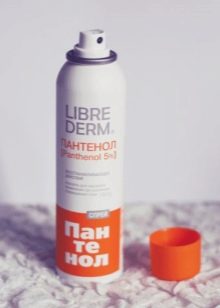


On the first day after epilation, the treated area should not be wetted with water. Hot baths should be abandoned for a while, opting for a warm shower. During water procedures, it is not recommended to use washcloths and soaps that cause dry skin. Of the detergents, it is better to give preference to soft foams with a moisturizing and soothing effect.
For 5-7 days after the procedure, cosmetologists recommend refraining from intimacy, which can increase puffiness and inflammation of the skin. Increased sexual activity during this period can significantly slow down the process of tissue repair.

Review overview
Laser hair removal, according to those who have previously resorted to this service, is one of the most effective and safe methods for removing unwanted hair in the sensitive intimate area. At the same time, the majority of the respondents note that with the help of this procedure it is possible to get rid of even very tough, dark, abundantly growing hair for a long time.
Users consider the undeniable advantages of laser hair removal to be high efficiency and stable results. After the procedure, blackheads do not remain on the skin, allergic rashes, acne, and areas with ingrown hairs do not form. With a well-chosen and conducted course of laser hair removal sessions, the result is maintained for several years.
Many users report excellent aesthetic results after bikini laser hair removal.
According to them, the skin after the procedure remains smooth, silky and soft for a long time.

In addition, there is another specific plus of laser hair removal, which consists in high-quality hair removal in hard-to-reach and very delicate areas of the bikini zone, which require extremely delicate handling. Often, such areas (the area of the external genital organs, perineum and anus) are injured during shaving, waxing and shugaring. The use of depilatory creams on these areas often causes allergic reactions, accompanied by the appearance of rashes, itching, burning and swelling. Laser hair removal of these areas, in turn, does not cause discomfort and ensures the ideal removal of unnecessary vegetation.
At the same time, one of the minor disadvantages of the method, users consider the need for laser hair removal in a course consisting of several sessions. On average, it takes 5-6 sessions to completely remove unwanted hair in the bikini area.
Moreover, after the first session, only 20-30% of the total number of hairs in the intimate area falls out.
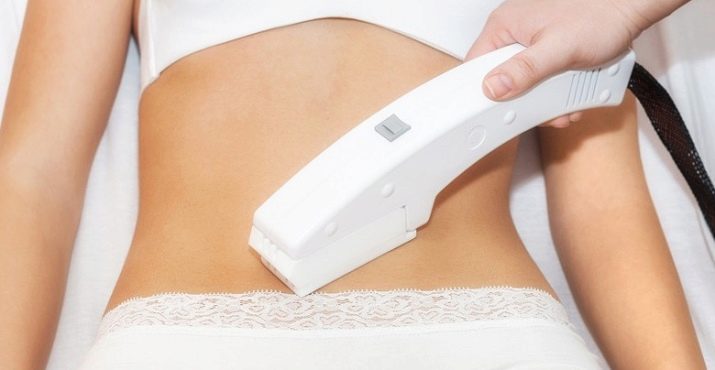
In addition, some users attribute the cost of bikini laser hair removal to the disadvantages. Indeed, compared to the cost of depilatory creams or shaving razors, the cost of multiple epilation sessions can seem hefty.However, with detailed calculations (taking into account the duration of the effect and the quality of the results obtained), we can conclude that all the costs incurred by the user, in the end, pay off in the first few weeks.








